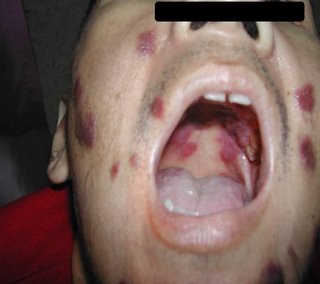I talked about AIDS/HIV three months ago in my blog. Today, we are going to revisit this common disease again because it is a very popular disease asked in MRCP.
There are a few simple facts to remember about HIV,
1) It is a retrovirus ( Family: Retroviridae) . HIV is completely dependent upon CD4 cells for replication and survival.
2) HIV leads to a progression fall in T-helper cells ( CD4) and a failure of T-cell proliferation.
3) HIV infection can be divided into 3 stages- acute seroconversion ( patients usually present with viral-like fever) , intermediate stage ( asymptomatic) and advanced stage ( AIDS)
Advanced stage of HIV (AIDS) is defined when the patient’s CD4 counts drop below 200 /cmm.
When our CD4 drops below 200, we are prone to get all kinds of rare infections ( opportunistic infections) which are uncommon in immune competent hosts.
There are a few AIDS defining conditions that are commonly asked in MRCP examination, these conditions are,
1) PCP
2) Toxoplasmosis
3) Cytomegalovirus
4) Kaposi’s Sarcoma
5) Cryptococcus meningitis
6) Extrapulmonary tuberculosis and atypical mycobacterium
7) Non-Hodgkin’s lymphoma
and others, however, I think these are the most important diseases you must learn.
About PCP, I think I have covered adequately in my previous post. Today I am going to talk about Kaposi’s Sarcoma (KS),
OK, this disease was considered to be very rare before the era of AIDS. It mainly affects elderly men of Mediterranean or Jewish heritage, organ transplant patients, or young adult African men. KS was named for Dr Moritz Kaposi who first described it in 1872.
In patients with AIDS, this tumuor tends to develop in the tissues below the skin surface, or in the mucous membranes of the mouth, nose, or anus. It is always described as raised blotches or lumps that may be purple, brown, or red. Sometimes the disease causes painful swelling, especially in the legs, groin area, or skin around the eyes. KS is caused by a herpes virus called Human Herpes Virus 8 (HHV-8).
However, KS is rare among Asian patients with AIDS as compared to Western patients.
In the skin, KS may not have to be treated if there are only a few lesions. Skin lesions can be:
Frozen with liquid nitrogen,
Treated with radiation,
Cut out surgically,
Injected with anti-cancer drugs or interferon alpha
A few photos of KS are shown below,


Tips for MRCP,
1) Remember that you may not only see KS occurs at skin but also mucous membrane

1 comment:
Sorry for the mistake, thank you for your prompt comment, wouter!
Post a Comment